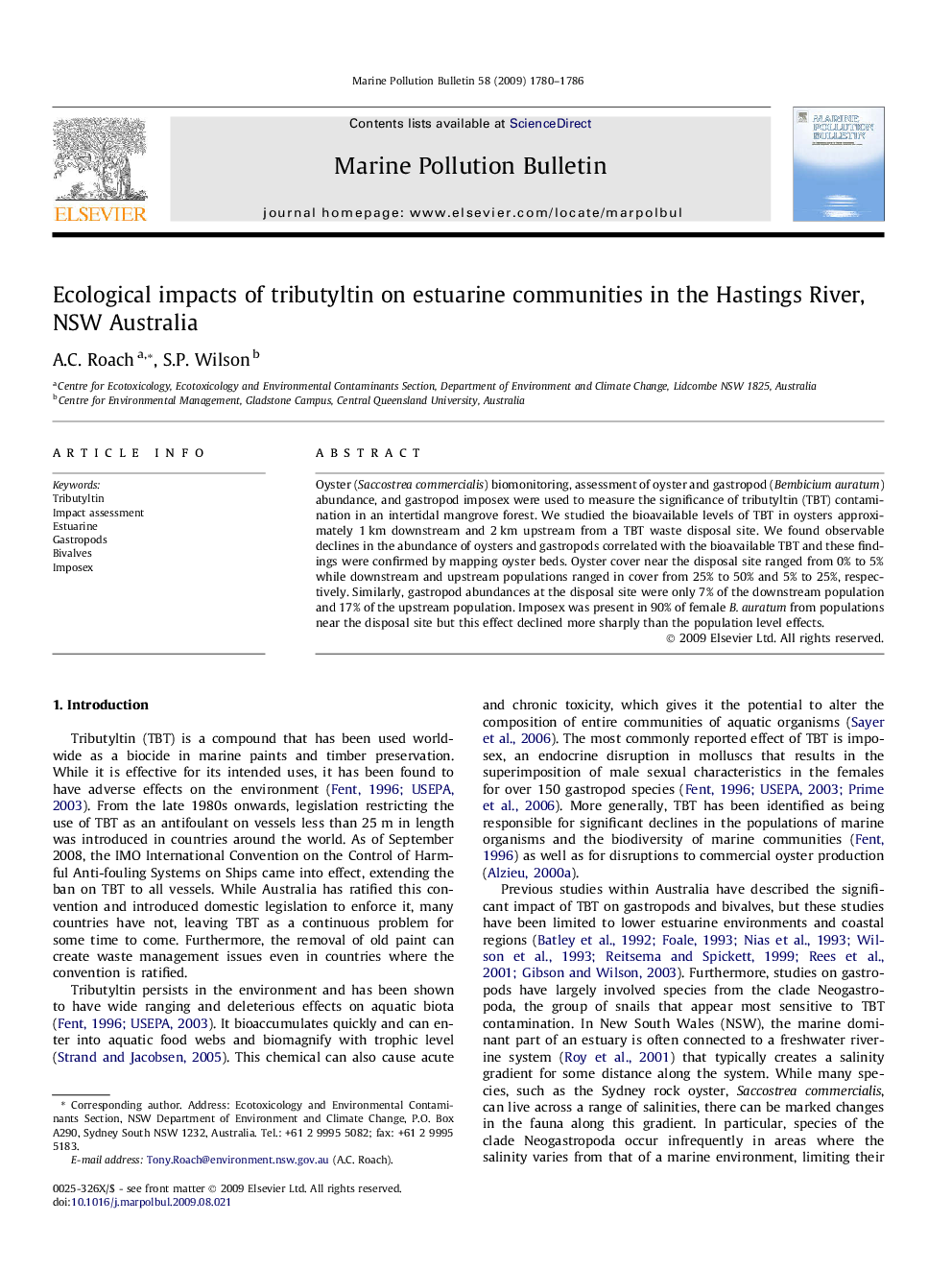| Article ID | Journal | Published Year | Pages | File Type |
|---|---|---|---|---|
| 6362941 | Marine Pollution Bulletin | 2009 | 7 Pages |
Oyster (Saccostrea commercialis) biomonitoring, assessment of oyster and gastropod (Bembicium auratum) abundance, and gastropod imposex were used to measure the significance of tributyltin (TBT) contamination in an intertidal mangrove forest. We studied the bioavailable levels of TBT in oysters approximately 1Â km downstream and 2Â km upstream from a TBT waste disposal site. We found observable declines in the abundance of oysters and gastropods correlated with the bioavailable TBT and these findings were confirmed by mapping oyster beds. Oyster cover near the disposal site ranged from 0% to 5% while downstream and upstream populations ranged in cover from 25-50% to 5-25%, respectively. Similarly, gastropod abundances at the disposal site were only 7% of the downstream population and 17% of the upstream population. Imposex was present in 90% of female B. auratum from populations near the disposal site but this effect declined more sharply than the population level effects.
